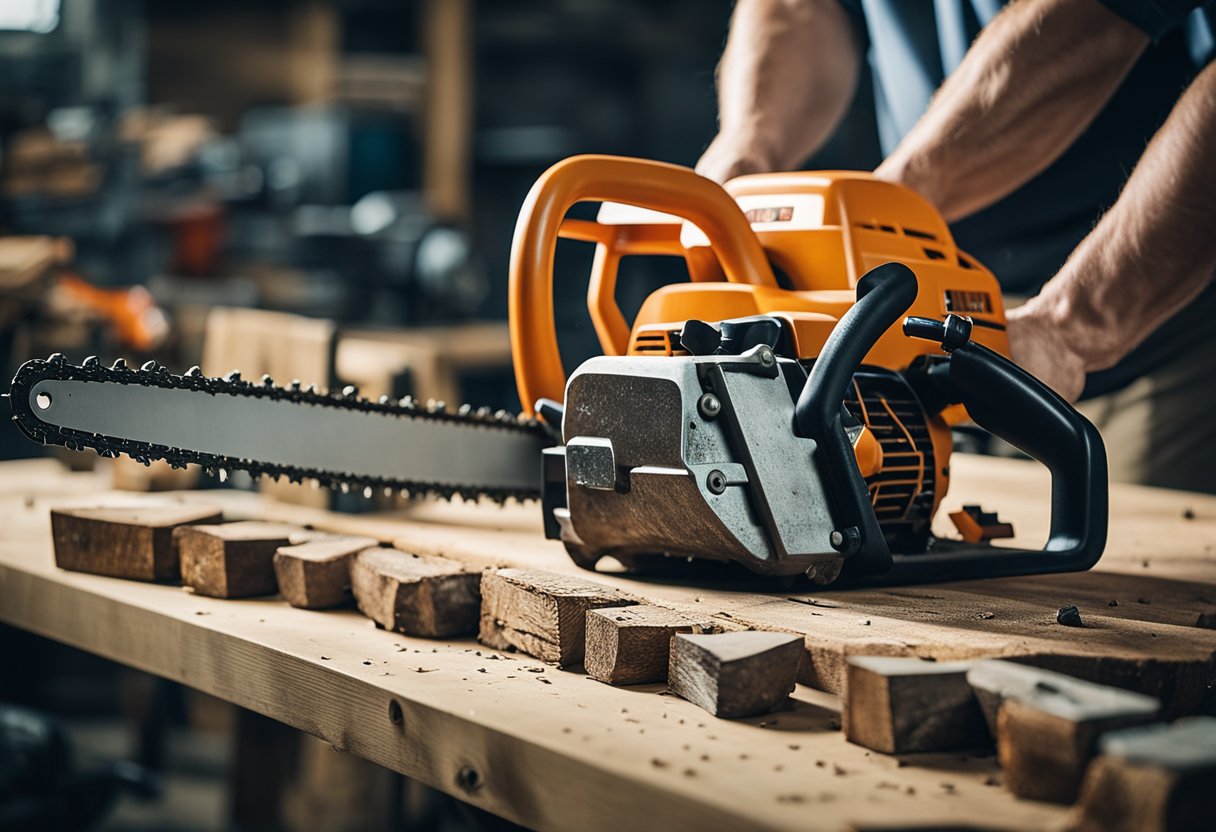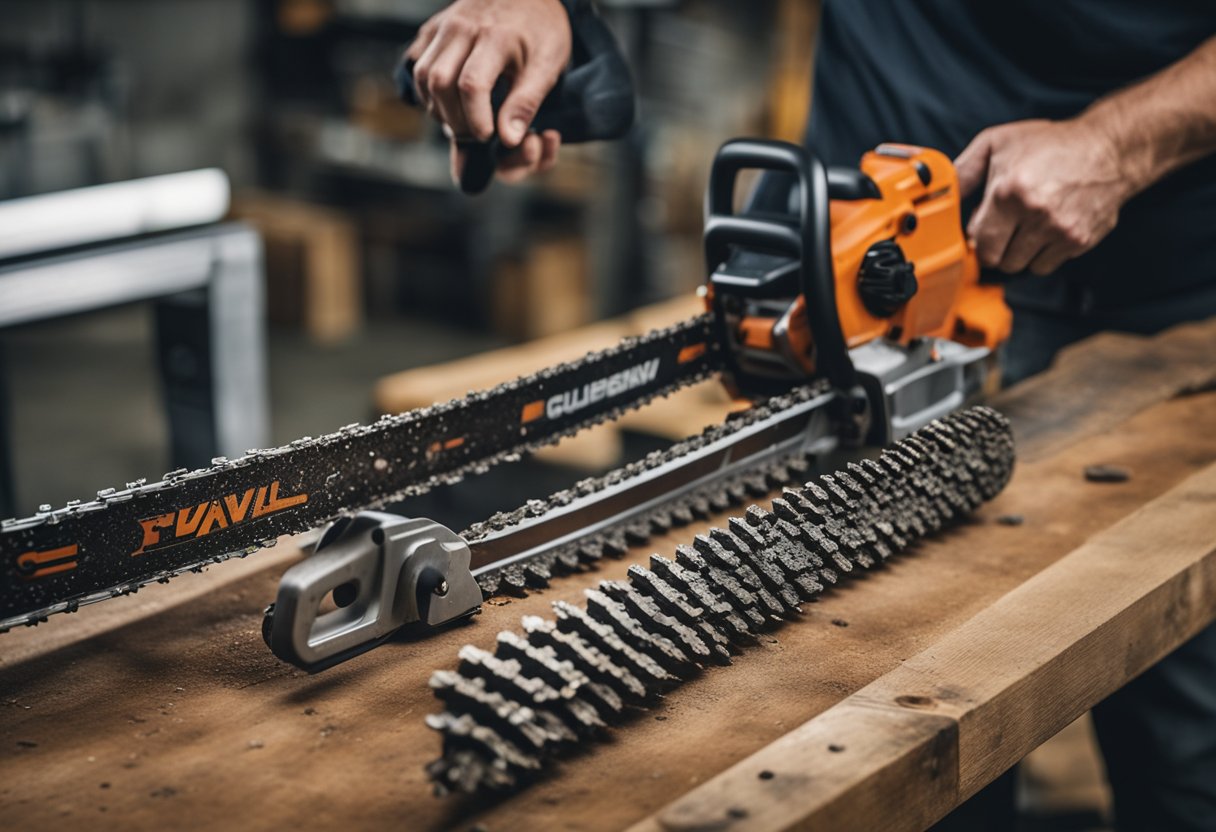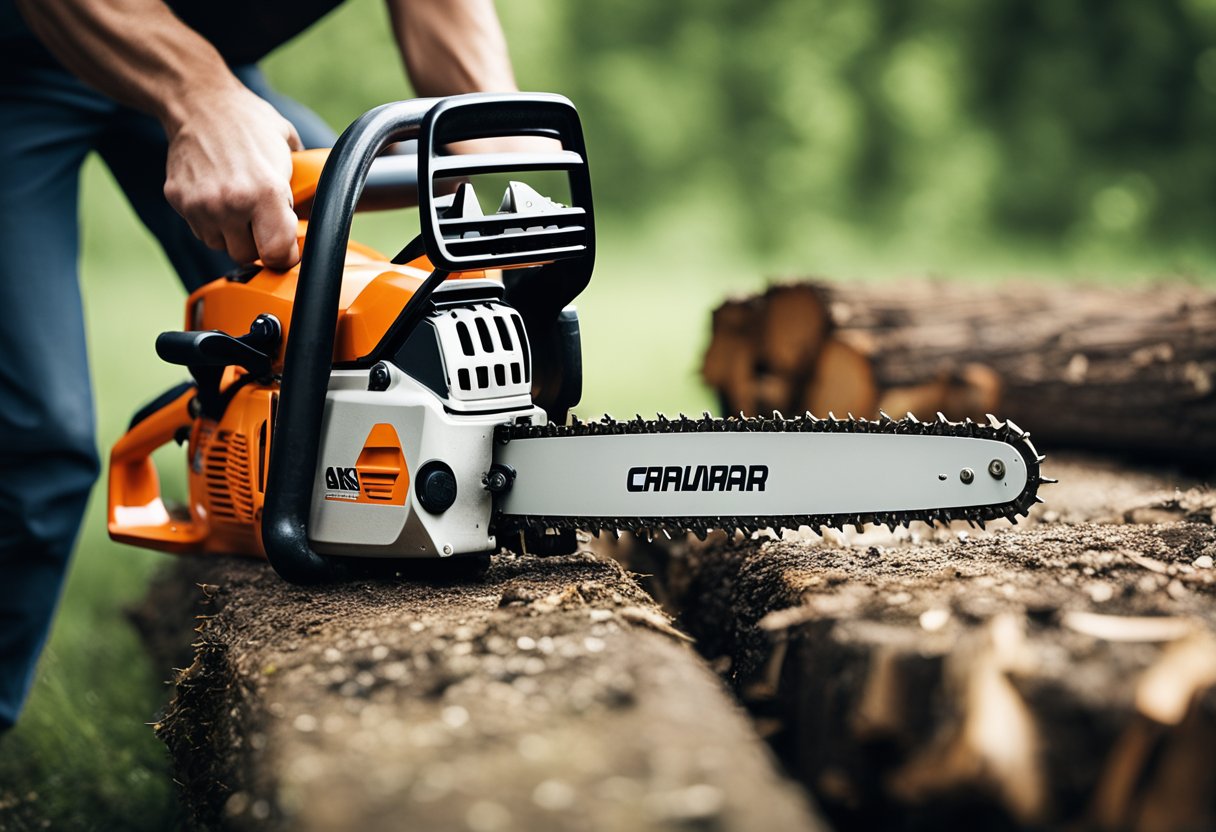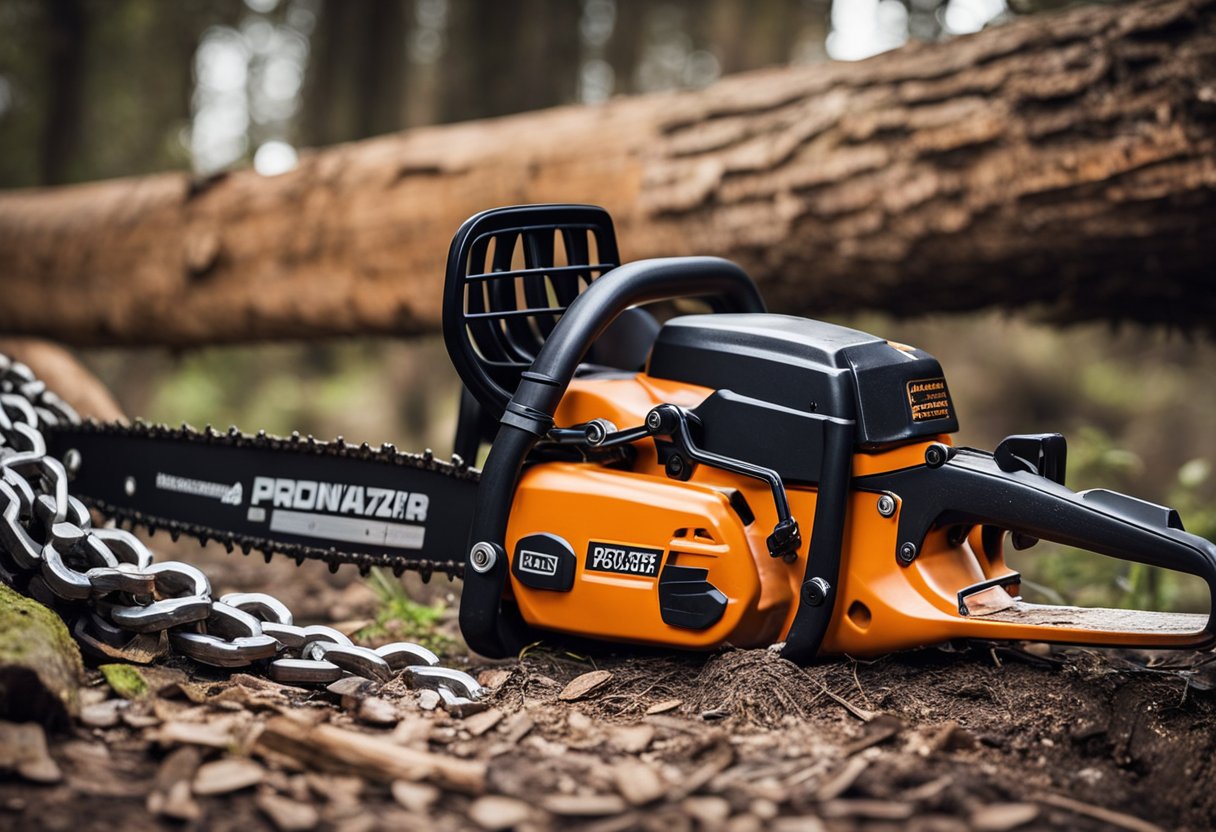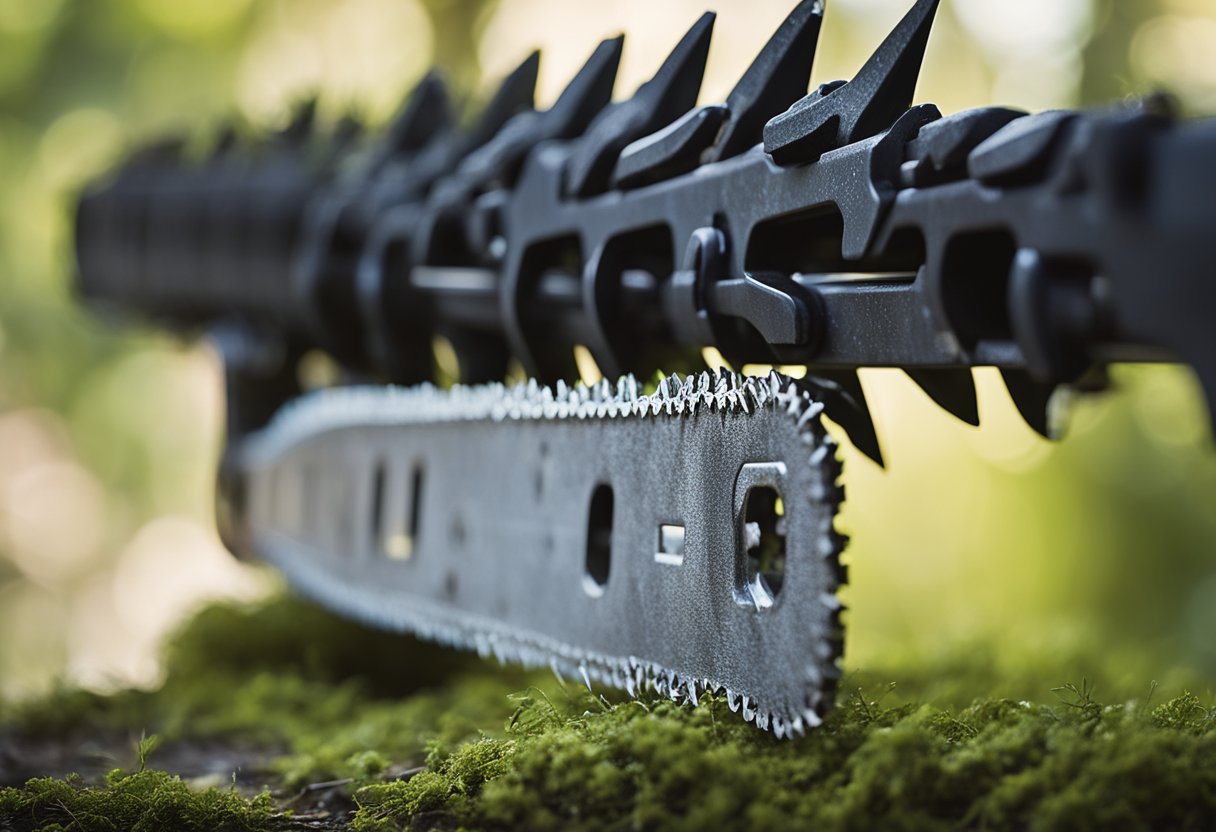When it comes to chainsaws, the bar is one of the most important components. It is the flat, elongated piece of metal that guides the chain and determines how deep it can cut. However, over time, the chainsaw bar can become worn out or damaged, which can lead to decreased performance and even safety hazards. In this article, I will discuss when to replace a chainsaw bar and provide helpful tips for maintaining and choosing the right replacement.
Understanding chainsaw bars is essential for knowing when to replace them. There are different types of chainsaw bars, including solid bars, laminated bars, and replaceable sprocket nose bars. Each type has its own advantages and disadvantages, and it is important to choose the right one for your chainsaw. Additionally, chainsaw bars come in different lengths, which can affect their lifespan and performance.
Signs of wear and tear on chainsaw bars are important to look out for. These signs include burrs, crookedness, dinks, cracks, and pinched rails. Additionally, if the chainsaw chain wiggles side to side on the chainsaw guide bar or the edges of the blades are tilted at an angle, it may be time to replace the bar. Regular maintenance of chainsaw bars can help extend their lifespan, but eventually, all chainsaw bars need to be replaced.
Understanding Chainsaw Bars
https://www.youtube.com/watch?v=0Lin8WqzFJs&embed=true
As a chainsaw user, it is important to understand the chainsaw bar, also known as the guide bar. The chainsaw bar is an essential component of the chainsaw, as it guides the chain and determines the depth of the cut.
Chainsaw bars come in different lengths, and it is crucial to choose the right length for your chainsaw. Using the wrong length can lead to poor performance and even damage to the chainsaw. To determine the correct length, measure the cutting length of the bar, which is the distance from the front of the saw to the tip of the guide bar.
Another important aspect of the chainsaw bar is the groove, which is the channel that guides the chain. The groove should be kept clean and free of debris to ensure proper chain movement.
It is also important to regularly inspect the chainsaw bar for signs of wear and damage. Over time, the chainsaw bar can become worn or damaged, which can affect its performance. Signs of wear and damage include burrs, splinters, and burn marks. If any of these signs are present, it may be time to replace the chainsaw bar.
Stihl chainsaws are known for their high-quality guide bars, and it is recommended to use Stihl guide bars with Stihl chainsaws for optimal performance. However, there are also other guide bar options available on the market that may be suitable for your chainsaw.
In summary, understanding the chainsaw bar is crucial for proper chainsaw performance and maintenance. Regular inspection and maintenance of the chainsaw bar can help ensure optimal performance and prevent damage to the chainsaw.
Signs of Wear and Tear on Chainsaw Bars
https://www.youtube.com/watch?v=z9UMTHEkn8Q&embed=true
As a professional who has worked with chainsaws for years, I know that the guide bar is an essential component of the chainsaw. It is responsible for holding the chain in place and guiding it through the wood. However, like any other component, it wears out over time and needs to be replaced. Here are some signs of wear and tear that you should look out for:
Rail Wear
Rail wear is a common sign of wear and tear on chainsaw bars. The rails are the parts of the bar that the chain rides on. Over time, the rails can become worn or damaged, which can cause the chain to slip or become loose. You can check for rail wear by inspecting the rails for any signs of damage or wear.
Guide Bar Damage
Guide bar damage is another sign that your chainsaw bar needs to be replaced. This can happen due to a variety of reasons, including heat, debris, vibration, and more. You can check for guide bar damage by inspecting the bar for any cracks, bends, or other signs of damage.
Wear Markers
Most chainsaw bars come with wear markers that indicate when the bar needs to be replaced. These markers are usually located on the underside of the bar and are designed to show you when the bar has worn down to a certain point. If you see the wear markers, it’s time to replace the bar.
Bent Bar
A bent bar is a clear sign that your chainsaw bar needs to be replaced. A bent bar can cause the chain to bind or become loose, which can be dangerous. You can check for a bent bar by laying the bar on a flat surface and inspecting it for any signs of bending.
In conclusion, knowing when to replace a chainsaw bar is crucial for maintaining the safety and efficiency of your chainsaw. By looking out for signs of wear and tear, you can ensure that your chainsaw is always in good working condition.
Maintenance of Chainsaw Bars
https://www.youtube.com/watch?v=Ndff9D1SoFw&embed=true
As a chainsaw owner, I know that regular maintenance is crucial to keep my chainsaw in good working condition. One of the essential components of a chainsaw is its bar. Proper maintenance of the bar is essential to ensure that the chainsaw operates efficiently and safely.
The first step in maintaining a chainsaw bar is to ensure that it is well-oiled. The oiler on the chainsaw should be checked regularly to ensure that it is functioning correctly. If the oiler is not working correctly, the bar will not be lubricated sufficiently, leading to increased wear and tear.
Another important aspect of maintaining a chainsaw bar is cleaning it regularly. After every use, I make sure to clean the bar thoroughly, removing any dirt, debris, or sawdust that may have accumulated. This helps to prevent corrosion and rust, which can weaken the bar over time.
Sharpening the chainsaw chain is also important for maintaining the bar. A dull chainsaw chain can damage the bar, which may require it to be replaced sooner than expected. I make sure to sharpen the chainsaw chain regularly, following the manufacturer’s instructions.
Depth gauge maintenance is also crucial for the chainsaw bar. The depth gauge controls how deep the chainsaw chain cuts into the wood. If the depth gauge is too high, it can cause the chainsaw chain to bind, which can damage the bar. I make sure to check the depth gauge regularly and adjust it as needed.
In summary, regular maintenance of the chainsaw bar is essential to ensure that the chainsaw operates efficiently and safely. This includes ensuring that the bar is well-oiled, cleaning it regularly, sharpening the chainsaw chain, and maintaining the depth gauge. By following these simple maintenance steps, I can prolong the life of my chainsaw bar and ensure that it performs optimally every time I use it.
Factors Affecting Chainsaw Bar Lifespan
https://www.youtube.com/watch?v=ulao–cOHfU&embed=true
As a chainsaw user, I know that the chainsaw bar is one of the essential components of a chainsaw. It is responsible for guiding the chainsaw chain during cutting, and it is essential to keep it in good condition to ensure optimal performance and safety. Here are some factors that can affect the lifespan of a chainsaw bar:
Frequency of Use
The frequency of use is one of the primary factors that affect the lifespan of a chainsaw bar. A chainsaw bar that is used frequently will wear out faster than one that is used less often. If you use your chainsaw regularly, it is essential to keep an eye on the condition of the bar and replace it when necessary.
Maintenance and Care
Proper maintenance and care are critical to extending the lifespan of a chainsaw bar. Regular cleaning, lubrication, and inspection can help prevent damage and wear. It is also essential to keep the chainsaw chain sharp and properly tensioned, as a dull or loose chain can cause excessive wear on the bar.
Type of Bar
The type of chainsaw bar you use can also affect its lifespan. Different bars are designed for different types of cutting, and some are more durable than others. For example, a solid bar is more durable than a laminated bar, but it is also heavier. It is essential to choose the right type of bar for your needs and to replace it when it reaches its wear limit.
Wear Limit and Groove Depth
Every chainsaw bar has a wear limit, which is the point at which it should be replaced. The wear limit is usually indicated by a groove in the bar, which indicates the minimum depth required for safe operation. If the groove depth is less than the recommended amount, it is time to replace the bar.
Friction and Abrasion
Friction and abrasion are two factors that can cause excessive wear on a chainsaw bar. Friction occurs when the chainsaw chain rubs against the bar, while abrasion occurs when the bar comes into contact with hard or abrasive materials. To minimize friction and abrasion, it is essential to keep the chainsaw chain properly tensioned and to avoid cutting hard or abrasive materials.
In conclusion, the lifespan of a chainsaw bar can be affected by many factors, including frequency of use, maintenance and care, type of bar, wear limit, groove depth, friction, and abrasion. By taking care of your chainsaw and replacing the bar when necessary, you can ensure optimal performance and safety.
When to Replace Chainsaw Bars
https://www.youtube.com/watch?v=vhihmrSeX_U&embed=true
As someone who has used chainsaws for many years, I know that it can be challenging to determine when to replace a chainsaw bar. However, there are several signs that indicate it’s time to replace a chainsaw bar.
One of the most obvious signs is when the chainsaw bar is worn out. Over time, the chainsaw bar will become worn from use, and the groove that the chainsaw chain runs in will become wider. When this happens, the chainsaw chain will start to slip, and it will become difficult to cut through wood.
Another sign that it’s time to replace a chainsaw bar is when it starts to break. If you notice any cracks or other damage to the chainsaw bar, it’s time to replace it. Using a damaged chainsaw bar can be dangerous, as it can break while you’re using it, causing serious injury.
In addition to wear and tear and damage, there are other signs that indicate it’s time to replace a chainsaw bar. For example, if the chainsaw bar is crooked, it needs to be replaced as it won’t cut properly and can be dangerous. You can easily determine whether your bar is crooked or not by holding a straight item leaning against it like a rod. If there’s a gap, it means it’s crooked and needs to be replaced.
Experts suggest replacement when the chainsaw chain wiggles side to side on the guide bar. Also, if the guide bar nose sprocket is damaged and the edges of the blades are tilted at an angle, you need to change the chainsaw guide bar.
In general, a chainsaw bar should last for several years with proper care and maintenance. However, it’s important to keep an eye out for signs of wear and tear, damage, and other issues that may indicate it’s time to replace the chainsaw bar.
Choosing the Right Replacement Chainsaw Bar
When it comes to replacing a chainsaw bar, it’s important to choose the right one for your needs. Here are some factors to consider when selecting a replacement chainsaw bar:
Material
The material of the chainsaw bar can affect its durability, weight, and price. Steel is a common material for chainsaw bars and is known for its strength and durability. However, it can also be heavier and more expensive than other materials. If you’re looking for a lighter and more affordable option, you may want to consider a chainsaw bar made of aluminum.
Power and Drive Links
The power of your chainsaw and the number of drive links on your chain can affect the size of the replacement chainsaw bar you need. Be sure to check your chainsaw’s manual or consult with a professional to determine the appropriate bar size for your chainsaw.
Chain Tension
Proper chain tension is important for safe and efficient chainsaw operation. When selecting a replacement chainsaw bar, be sure to choose one that is compatible with the tensioning mechanism on your chainsaw.
Uniform Length
To ensure smooth and even cutting, it’s important to choose a chainsaw bar with a uniform length. This means that the distance between the chain’s drive links and the tip of the bar should be the same on both sides.
Chain Sprocket
The chain sprocket on your chainsaw can also affect the size of the replacement chainsaw bar you need. Be sure to check your chainsaw’s manual or consult with a professional to determine the appropriate bar size for your chainsaw.
Control Gauge
The control gauge on your chainsaw measures the thickness of the drive links on your chain. When selecting a replacement chainsaw bar, be sure to choose one with a control gauge that matches the gauge of your chain.
By considering these factors, you can choose the right replacement chainsaw bar for your needs and ensure safe and efficient operation of your chainsaw.
How to Replace Chainsaw Bars
Replacing a chainsaw bar is a straightforward process that can be completed with a few basic tools. Before starting, you should ensure that you have the correct replacement bar for your chainsaw model. You can find this information in your chainsaw’s manual or by contacting a Stihl-approved dealer.
Here are the steps to replace a chainsaw bar:
- First, ensure that your chainsaw is turned off and disconnected from its power source.
- Remove the chainsaw’s side cover by loosening the nuts or screws that hold it in place.
- Remove the old chainsaw bar by loosening the tensioning screw and sliding it out of the chainsaw’s body.
- Clean any debris or sawdust from the chainsaw’s body and side cover.
- Install the new chainsaw bar by sliding it into the chainsaw’s body and tightening the tensioning screw to secure it in place.
- Reattach the chainsaw’s side cover and tighten the nuts or screws to secure it in place.
It’s important to note that if you are not comfortable with replacing a chainsaw bar yourself, you can always take your chainsaw to a Stihl-approved dealer for repair. They have the expertise and tools necessary to complete the repair safely and efficiently.
Additionally, it’s a good idea to keep spare chainsaw bars on hand in case of damage or wear. You can purchase them from a Stihl-approved dealer or through retail therapy online.
Overall, replacing a chainsaw bar is a simple process that can be completed with basic tools and a little bit of knowledge. With proper maintenance and care, your chainsaw will continue to perform at its best for years to come.
Improving Chainsaw Bar and Chain Performance
As a chainsaw user, I want to ensure that my chainsaw is performing at its best. A well-maintained chainsaw bar and chain can significantly improve the cutting performance of your chainsaw. Here are some tips to improve your chainsaw bar and chain performance:
Keep Your Chainsaw Bar and Chain Clean
A dirty chainsaw bar and chain can reduce the cutting performance of your chainsaw. Dirt and debris can clog the chain and cause it to bind, making it harder to cut through wood. To keep your chainsaw bar and chain clean, wipe them down after each use. You can use a soft cloth or a brush to remove dirt and debris from the chain.
Keep Your Chainsaw Bar and Chain Lubricated
A well-lubricated chainsaw bar and chain can significantly improve the cutting performance of your chainsaw. The chain needs to be lubricated to reduce friction between the chain and the bar. A lack of lubrication can cause the chain to bind and reduce the cutting performance of your chainsaw. Always ensure that your chainsaw bar and chain are well-lubricated before use.
Keep Your Chainsaw Bar and Chain Sharp
A sharp chainsaw bar and chain can significantly improve the cutting performance of your chainsaw. A dull chain can cause the chainsaw to work harder, reducing its cutting performance. Always ensure that your chainsaw chain is sharp before use. You can sharpen your chainsaw chain using a chainsaw file guide.
Use the Right Chainsaw Bar and Chain
Using the right chainsaw bar and chain can significantly improve the cutting performance of your chainsaw. The length of the chainsaw bar and the pitch of the chain must be compatible with your chainsaw. Using the wrong chainsaw bar and chain can cause the chainsaw to work harder, reducing its cutting performance.
By following these tips, you can significantly improve the cutting performance of your chainsaw. A well-maintained chainsaw bar and chain can make all the difference when it comes to cutting wood.
Frequently Asked Questions
How often should you replace a chainsaw bar?
The frequency of replacing a chainsaw bar depends on how often you use it and the type of wood you are cutting. Generally, a chainsaw bar should be replaced every 2-5 years or after cutting 20-30 cords of wood. However, if you notice any signs of wear and tear, it is best to replace the bar immediately.
What are the signs of wear and tear on a chainsaw bar?
The signs of wear and tear on a chainsaw bar include pinched rails, damaged or jammed chainsaw bar nose sprocket, tilted edges of the blades, wiggling chainsaw chain, burrs formed, splinters, and faded paint. If you notice any of these signs, it is time to replace the chainsaw bar.
How can you tell if a chainsaw bar needs to be replaced?
You can tell if a chainsaw bar needs to be replaced by inspecting it thoroughly. Check for any signs of wear and tear like pinched rails, damaged or jammed chainsaw bar nose sprocket, tilted edges of the blades, wiggling chainsaw chain, burrs formed, splinters, and faded paint. If any of these signs are present, it is time to replace the chainsaw bar.
What is the lifespan of a chainsaw bar?
The lifespan of a chainsaw bar depends on how often it is used and the type of wood it cuts. Generally, a chainsaw bar can last anywhere from 2-5 years or after cutting 20-30 cords of wood. However, if you notice signs of wear and tear, it is best to replace the chainsaw bar immediately.
What are the consequences of using a worn-out chainsaw bar?
Using a worn-out chainsaw bar can lead to safety hazards and poor performance. A worn-out chainsaw bar can cause kickback, which can be dangerous for the user. It can also cause the chainsaw to work inefficiently, leading to a decrease in productivity and an increase in fuel consumption.
Can a chainsaw bar be repaired or sharpened?
A chainsaw bar can be sharpened, but it cannot be repaired. Sharpening the chainsaw bar can help extend its lifespan, but it cannot fix any damage caused by wear and tear. If the chainsaw bar is damaged, it must be replaced.

Hi, I’m Sal Muller of Tooltrip.com. My DIY experience led me to understand essential power tools for home projects. Tooltrip.com guides enthusiasts and professionals in choosing right tools for any job. I provide concise top tool reviews for easier, efficient DIY.

